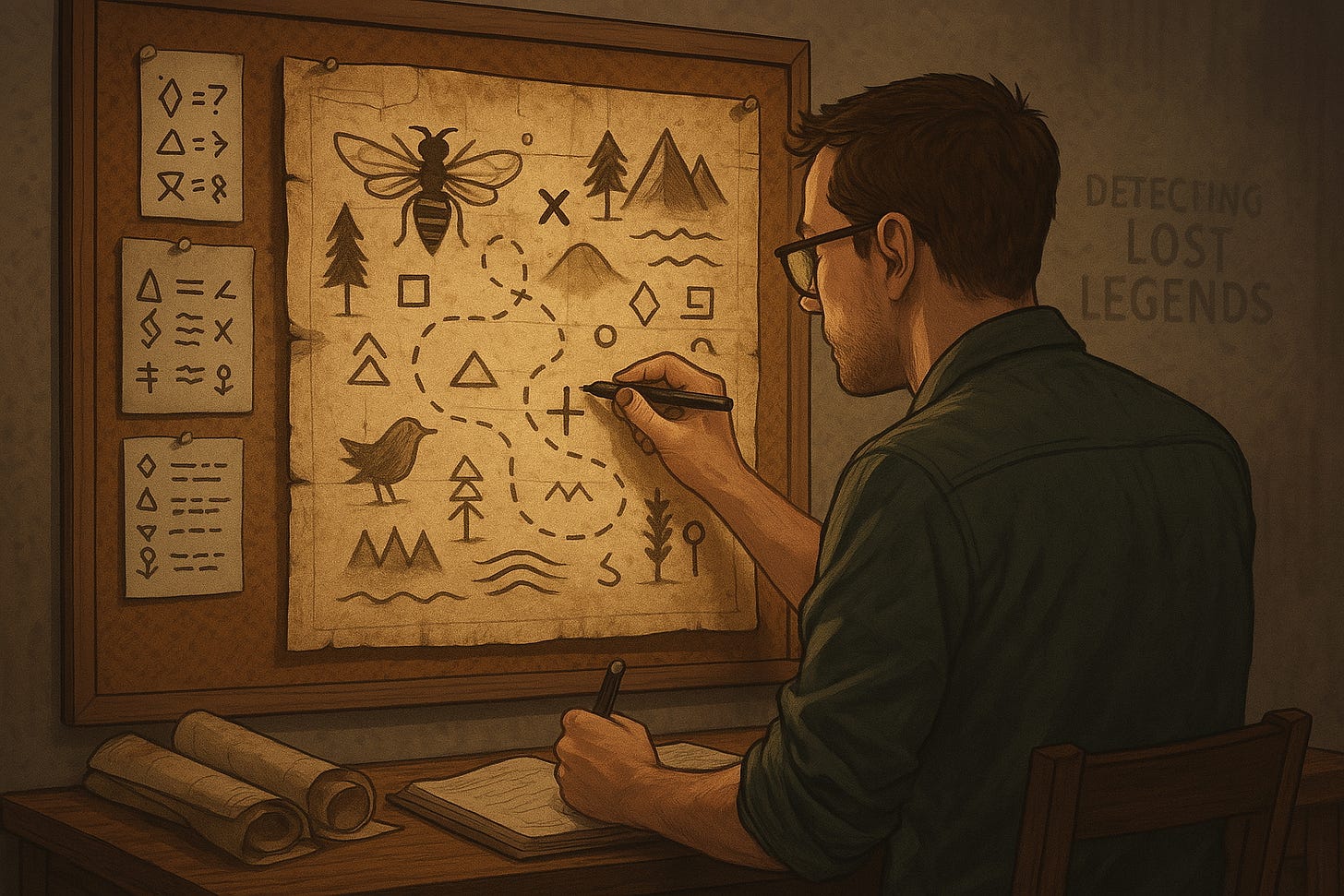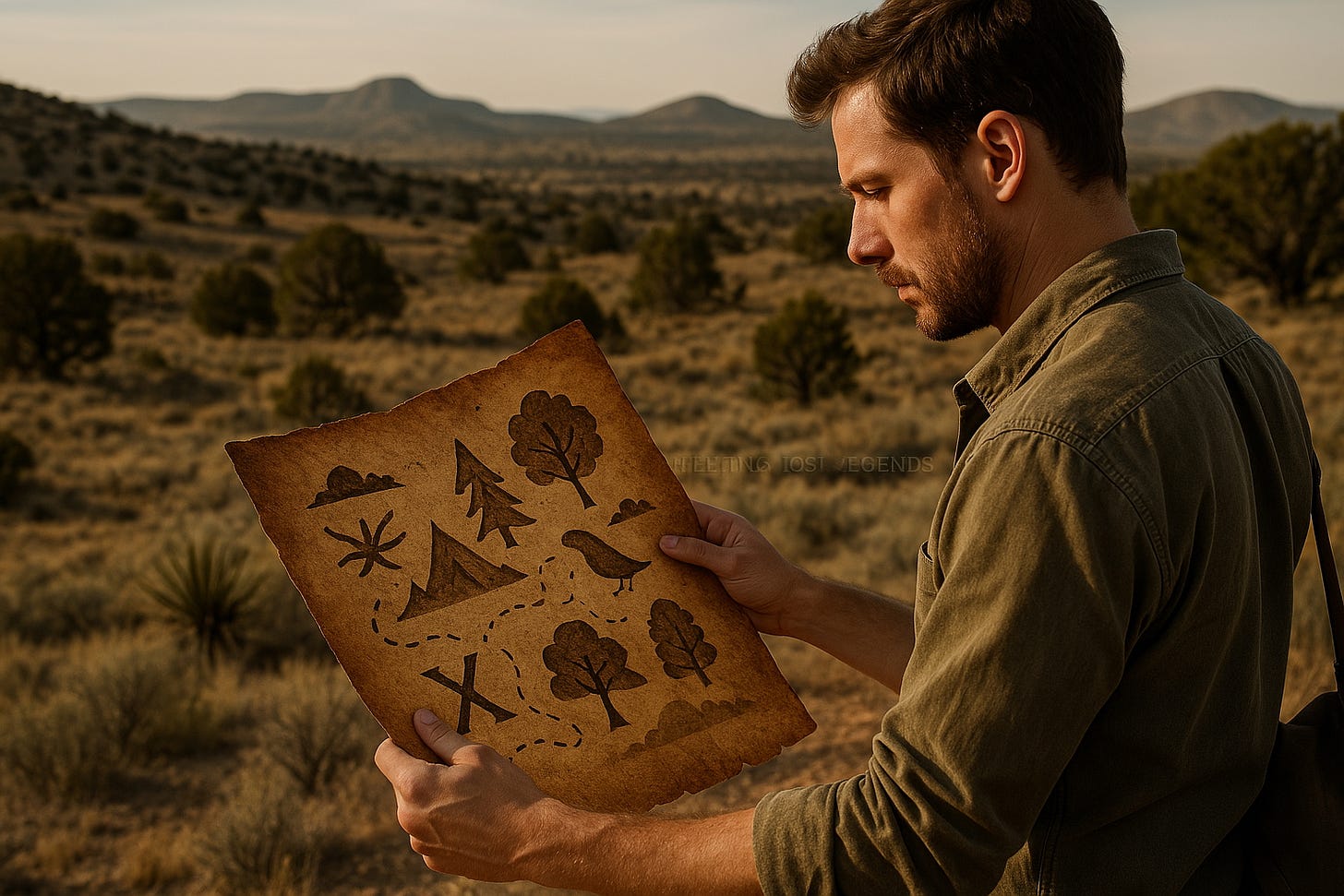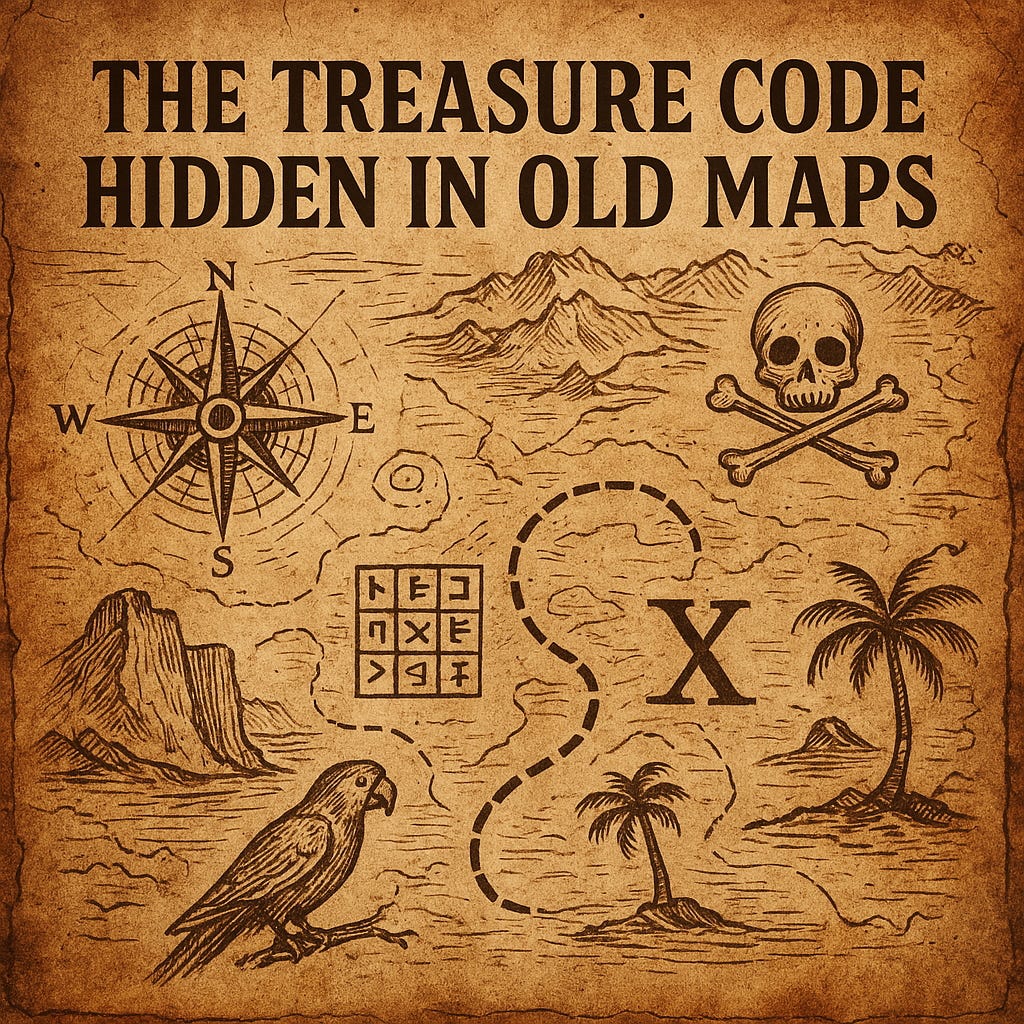Ciphered Treasure Maps
Where Symbols Speak Louder Than Xs, and Treasure Is a Language Waiting to Be Read
What if the real treasure was never buried—but encoded?
Old maps weren’t just navigational tools. They were decoys. Puzzles. Vaults of generational secrets disguised in ink, legend, and misdirection.
Some say the greatest treasures aren’t guarded by traps or curses, but by symbols and codes—waiting centuries to be deciphered.
Welcome to Detecting Lost Legends, where today we investigate the world of ciphered cartography. A shadow realm of hand-drawn maps, hidden coordinates, and deliberately misleading landmarks—each designed to protect something precious.
🔍 A Brief History of Deceptive Maps
For centuries, mapmakers walked a line between artist and alchemist. In the age before GPS, accuracy was power. And secrecy? Even more valuable.
Pirate scrolls were often encoded to keep loot hidden even from fellow crew members.
Jesuit missionaries in the New World are believed to have created maps laced with symbolic overlays—recording sacred locations or lost mines beneath religious iconography.
Spanish treasure hunters sometimes layered coordinates over false trails or drew maps intentionally flipped east-west to confuse rivals.
These weren’t simple errors. These were intentional encryptions.
📊 Symbolic Cartography: More Than Just an "X"
While fiction has glamorized "X marks the spot," historical maps rarely used it. So what did early treasure or mystery maps rely on instead?
❌ X Marks the Spot
Popularized by pirate lore and Hollywood. Historically rare. When it was used, it often marked a reference point, not the final destination.
⚜️ Trees, Rocks, and Shadows
Natural landmarks were common orientation tools. A bent tree, uniquely shaped boulder, or shadow at a specific time of day could be the real marker.
△ Geometric Alignments
Triangulation between points like wells, churches, or tombstones. Many old maps require physical positioning to align clues.
✪ Stars and Constellations
Celestial alignments weren’t just for navigation—they may have been integrated into treasure coordinates, only visible during certain seasons or solstices.
👁🗨 Hidden Glyphs and Sigils
Masonic and esoteric symbols often doubled as geographic hints or coded instructions. These would be meaningless to outsiders.
⛺ Tents or Tepees
Marked locations of temporary dwellings—but some believe these symbols indicated sites of temporary storage or trade, like waypoints for treasure movement.
🐞 Bees, Snakes, and Birds
Appear on esoteric maps and scrolls. These creatures often link to myth, territory, or symbolic meanings: bees = community/hidden labor, snakes = danger/protection, birds = watchers or messengers.
⚛️ Alchemical or Astrological Glyphs
Appear in templar and hermetic manuscripts; may overlay with calendar cycles or elemental forces.
⭐ Hidden Initials or Sigils
Some hand-drawn maps embed creators' initials, directional hints, or personal glyphs visible only under specific light or angles.
In the end, if "X" was rarely the signpost, then the natural world itself often acted as the cipher. Trees became timekeepers, shadows became pointers, and rocks became repositories of meaning. These maps weren’t simply about geography—they were designed for those who could read between the lines, interpret symbols intuitively, and sense the rhythm of the land. Only those attuned to that ancient language could hope to decode their secrets.
😎 The Most Mysterious Maps on Record
Here are a few real-world artifacts that continue to baffle historians and codebreakers:
🏛️ The Beale Ciphers
Discovered in the 1800s, these coded messages allegedly reveal the location of a massive buried treasure in Virginia. One cipher was cracked—using the Declaration of Independence as a key. Two remain unsolved to this day.
Is it real? Or an elaborate 19th-century hoax? Either way, the code has never been broken.
☠️ The Oak Island Map
Linked to the infamous Oak Island mystery in Nova Scotia, some versions of this map appear to contain Masonic symbols and geometric alignments. Treasure or not, people have spent lifetimes (and fortunes) trying to decode it.
A great Substack deep dive:
🌍 The Vinland Map
Allegedly showing Viking exploration of North America before Columbus, this map's authenticity is hotly debated. Some researchers believe it contains hidden Nordic runes meant to signify deeper meanings.
🧰 Field Tools: Decoding the Deception
What does it take to break these cartographic codes?
Pattern recognition algorithms can help highlight repeating shapes and numerical relationships.
LIDAR and remote sensing can verify whether terrain matches map data, even centuries later.
Symbol libraries compiled by independent researchers compare ancient sigils, star charts, and even astrological overlays.
And increasingly, AI tools (like this one) are being used to map patterns no human eye would catch.
🤯 A Working Theory: The Maps Were Meant to Delay, Not Deny
Some researchers now believe the intent wasn’t always to hide the treasure forever. It was to ensure that only someone worthy (clever, persistent, possibly even spiritually attuned) could unlock the clues.
That changes the game. We’re not just looking at maps as directions. We’re looking at them as trials.
⚠️ Signal Detected: Clues in Your Backyard?
We suspect more maps are out there—in estate sale trunks, family heirlooms, overlooked museum archives.
If you’ve found a strange hand-drawn map, marked symbols, or encrypted notes—we want to hear from you.
Send your tip to detectinglostlegends@gmail.com or leave a comment below.
🔐 Final Thought: Maybe the Treasure Was the Code Itself
Not all buried treasure glitters. Some of it glows—from the spark of unlocking something no one else could. The journey of deciphering an ancient map is often more than a path to gold—it's a path to understanding.
From The Goonies to The Da Vinci Code series with Tom Hanks, we’ve seen how the hunt for treasure is really a hunt for meaning. These stories strike something primal in us: the belief that buried beneath layers of ink and misdirection lies truth—and maybe a piece of ourselves.
Humanity has long hidden secrets from itself. We encode what matters. We protect it in language, art, math, even misdirection. The genius of a true treasure map lies not in its clarity, but in its challenge—what was the mapmaker trying to say? Who were they trying to reach—decades or even centuries down the line?
So keep looking. Keep questioning. Keep decoding. Because maybe the real treasure isn’t what you find at the end…
…it’s who you become along the way.
Thanks for reading.
Subscribe for more cases from the edge of exploration.
Mike Unfiltered — on Substack
#DetectingLostLegends #TreasureMaps #LostGold #CartographicMysteries #case-files #signal





